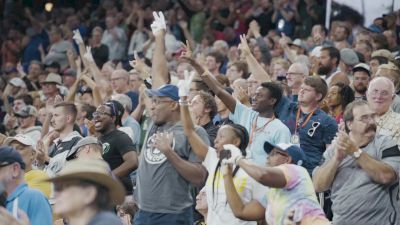2020 DCI Rule Change Proposals In A Nutshell
2020 DCI Rule Change Proposals In A Nutshell
Check out some of the rule change proposals to be voted on next weekend for the upcoming DCI 2020 Summer Tour!

Eight major proposals made it past DCI's Rules and Systems Task Force (RSTF) to be placed on the panel to be voted on during the organization's winter business meetings, January 10-11.
Sound mixing, instrumentation, scoring and more will be on the table at next week's annual meeting ?
— Drum Corps International (@DCI) January 3, 2020
? | #DCI2020https://t.co/TxPSs1bvw2
Every two years, Drum Corps International hosts the DCI Rules Congress at its winter meetings to be voted on by representatives from the member corps at the World Class and Open Class level. If a rule proposal moves past this first step, it will be debated and voted upon by the members.
With one week to go until the congress convenes, Drum Corps International has revealed the eight proposals which have made it through the first stages of vetting and must be legitimately considered by the voting membership.
Here are the eight proposals (check out DCI.org for more information & the full description and proposed impacts of each rule proposal):
Any Instrument Policy
Coming straight from the top of DCI's Board of Directors, Kathy Black proposed a rule to allow the use of any instrument including woodwinds and acoustic strings, starting in the 2021 season.
The main point of this proposal would be to open up the market of potential participants in the activity to the wide slew of extremely talented musicians that are currently ignored by the brass-only structure of a traditional drum and bugle corps. Black cites revenue opportunities and acknowledges "anecdotal information suggests a subset of the current audience will react negatively."
This will be at the top of our list to watch as these proposals go in to be voted upon as it would shift the current design direction of the activity considerably.
Brass Amplification Limitations
The main goal of this proposal, put up by Michael Martin from The Cavaliers, is to limit the amount of full-brassline microphone reinforcement and would limit corps to only placing microphones on featured soloists and small groups.
In 2019, full-brassline amplification became commonplace among the corps, especially those in the top twelve spots. Martin also specifies in his explanation that "amplified solo content should not reinforce non-amplified ensemble content."
Allow for Live Sampling Created in Real-Time
If you're familiar with the Bluecoats' recent innovation on the audio technology front, it's no surprise that their design team, namely Matt Jordan and Jon Vanderkolff, would be bringing forward rule changes to help its advancement.
As the title of the proposal states, passage of this rule would allow performers to create live recordings/samplings to be used in a loop or delayed. The main mission of their proposal relies on real-world application and training performers skills that they may use as opposed to using convoluted work-arounds that rarely apply to the professional audio industry.
Evaluation Structure Innovation
Perhaps one of the most interesting rule proposals to make it past the RSTF is this one from the Madison Scouts' leadership: Chris Komnick, Nick Monzi, and Jason Robb. Their proposal calls for a pilot program to be tried out which completely flips the current judging model on its head.
The proposal aims to shift part of the responsibility of ranking to the audience members, reliant upon which day of the week it is. For example, shows that take place on Monday and Tuesday evenings would be decided solely by fan-polling through a website or application. Wednesday and Thursday night shows would include an element of that but also tie in judge feedback (results would still fall solely on fan votes.) Finally, on Fridays, Saturdays, and Sundays, rankings would be completely reliant upon judge feedback and scores using the already existing rubric and criteria.
Color Guard Sheet Enhancement
In a very succinct proposal from The Cadets' Denise Bonfiglio, this rule, if passed, would completely shift the current approach to the judging sheets for color guard.
The philosophy shift would mean taking the bigger picture into account for color guard scores rather than focusing specifically on skills and achievement of those skills. Bonfigilio notes that the proposal "may force more integration of the guard into programs as it once was."
Rules and Systems Task Force Voted On By Membership
This is a simple process change that would allow the voting membership to decide who will sit on the Rules and Systems Task Force proposed by Lindsey Vento from The Academy.
Scoring System Update
Long-time judge Marie Czapinski proposed an adaptation to the current scoring system for the visual and music captions that would mirror the current general effect format—two overall judges with backgrounds in two appropriate captions that define their emphasis. These judges would remain in the stadium seats.
The main goal is to reward the ever-changing activity as hornlines, color guards, and percussion sections' skills blur the lines between the captions and incorporate props and production elements.
Sound Reinforcement Limits
The final proposal comes from Steve Vento of The Academy which would limit the amount of volume a corps is allowed to push out of their speakers in stadium venues. Larger venues would be limited to a maximum of 105, smaller venues to 95. This would not be too far off from the rules already present in Winter Guard International.
Vento references OSHA's limits and recommendations regarding sound exposure which notes that the permissible exposure limit is 90 dBA for an 8 hour day. This proposal would be enforced by the timing and penalty judge or chief judge.